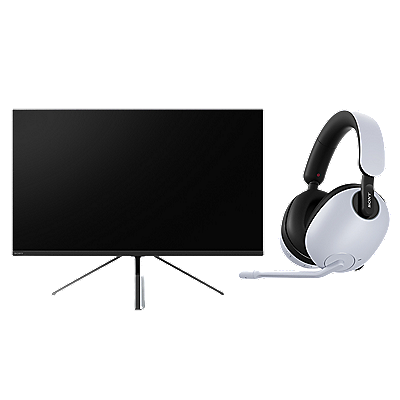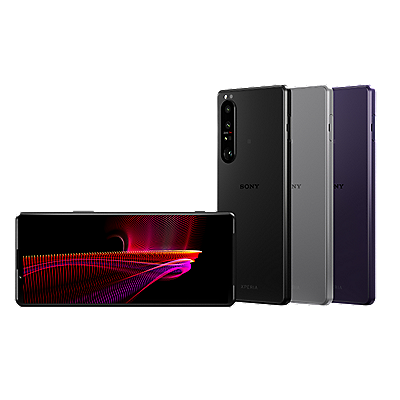There’s been a lot of talk about High-Resolution Audio and how it’s the equivalent of HDTV for your ears. But how does the sound quality of High-Resolution Audio actually compare to CDs or MP3s?
While it was once thought that the portability of MP3s and the stellar sound quality of CDs could never be beat, there’s now a new audio format that offers the best of both worlds. It’s time for High-Resolution Audio to shine.
Here’s a breakdown of the differences between High-Resolution Audio, CDs and MP3s.
High-Resolution Audio is audio that uses a higher sampling rate than in CDs and MP3s for the encoding and playback of music. Higher sampling rates mean that more samples per second were taken when the original analogue sound was converted into digital.
High-Resolution Audio files have a sampling frequency of 96 kHz/24 bit, which is significantly higher than the 44.1 KHz/16 bit sampling frequency of CDs.
How does that translate to the listening experience?
Listening to High-Resolution Audio allows you to pick up on the subtle details and nuances that you would hear in a recording studio. So, if you’re waiting to get your hands on Adele’s newly-released album, “25”, try listening to it in high-resolution. It’ll sound like you pulled up a stool next to the British diva, allowing you to hear every note of her soulful, impressive range.
On the other hand, when you convert analogue sound to digital formats like CDs and MP3s, that process can compromise the purity of the original signal. High-Resolution Audio brings your favorite songs to life by retaining more data during the analogue-to-digital conversion process.
When comparing bit rate, or the amount of data transferred per second, High-Resolution Audio’s bit rate (9,216 kbps) is nearly seven times higher than that of CDs (1,411 kbps) and almost 29 times higher than that of MP3s (320 kbps). And the higher the bit rate, the more accurately the signal is measured.
Bit rate has a direct impact on sound quality. When an original recording is compressed into an MP3 file, a lot of information is lost. A lower bit rate could translate to a softer bass response or weak-sounding drum cymbals, or it could blur the attack and decay of a plucked guitar string. Imagine the horror of listening to a dulled-down “DARE” by the Gorillaz! A lot of the details that artists and mixing engineers work hard to put into a recording are diminished or disappear entirely in an MP3 file.
High-Resolution Audio has the opposite effect. You could listen to one of your favorite recordings in high-resolution that you might have heard hundreds of times and still discover details that you’ve never heard before. That’s because High-Resolution audio formats are compressed in such a way that no audio data is lost. Everyone wins because High-Resolution Audio takes up less space while still delivering high quality audio. So dust off your copy of “Thriller” by Michael Jackson, buy a High-Resolution Audio version of the song and get ready to rediscover this timeless classic in a whole new way.
There’s no question that CDs sound much better than MP3s. But the real downside of the CD is its lack of portability. And having to search through an extensive CD collection to find the song you want to listen to can be frustrating. High-Resolution Audio offers both quality and convenience.
Popular streaming websites like Spotify and Pandora typically use a bitrate of 160 kbps, which is less than that of MP3s. If you spring for Spotify Premium, you’ll still only have access to 320 kbps tracks, which is equivalent to MP3s.
Tidal is one of the only streaming websites that streams in CD quality. But it still pales in comparison to the emotional experience that High-Resolution Audio delivers.
There are several companies that cater to audiophiles and music lovers by offering the latest high-resolution hits. You can browse the following music services to download high quality music and hear songs the way the artist truly intended:
HDtracks
Super HiRez
Qobuz
Note: HDtracks is available in the U.S., the U.K. and Germany. Qobuz is available in France, the U.K. and Germany. Super HiRez is available in the U.S. and Canada.
All you need to get into the High-Resolution Audio game is a quality music player and headphones. Here are the two gadgets we’d recommend if you want to dip your toes into the world of High-Resolution Audio:
Sony MDR-1A Headphones
Superior sound quality: Up to 100 kHz for balanced and natural sound reproduction
Long-term comfort: Its pressure-relieving urethane cushions wrap entirely around your ears so you can listen in comfort for hours on end
Lightweight: 7.94 ounces (225 grams)
Sony NWZ-A Series Walkman®
Superior sound quality: Its S-Master™ HX digital amp technology reduces distortion and noise across a wide range of frequencies
Upscale your existing music to near high-resolution sound quality: DSEE HX™ technology injects more life into your music
Exceptional battery life: Up to 30 hours of High-Resolution Audio playback
Dual memory: 16GB of built in memory storage (you can boost this with a microSDXC memory card)
PHA-1A USB DAC Headphone Amplifier
Made for High Resolution Audio: Supports asynchronous transfer to reduce noise and allows 192kHz/24bit content to be fully enjoyed
Superior conversion, pure sound: A combination of quality components provides superior conversion of the digital source to a pure, high quality audible signal
Shut out the noise: The aluminum casing offers shielding from noise and interference that can adversely affect sound quality
Small, light and durable: A compact, lightweight design that won’t weigh you down. Its rugged aluminum case protects from everyday knocks and shocks
New Music & Life Articles
Music and life: trends and news for music lovers and audiophiles.


























